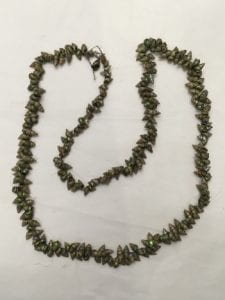Intimate Citizenship
Commonplace phrases are rarely as simple as they seem, especially when they have hefty legal implications to go with them. The term “citizenship” is one of these. Deceivingly tricky and complicated for its common place use, “Citizenship is a contested and a normative concept…[that] usually refers to full membership in a national state. [However] There are no authoritative definitions,” partially because different nation states – and the policy makers, factions, and people that make up those states – have different ideas of what citizenship entails.
In our modern world, citizenship is closely tied to the idea of democracy. Legally speaking, a citizen is somebody who has certain rights and obligations to a nation state. These are defined by the state they “belong” to – often thought practically as your passport state among transnational travelers. Citizens have certain obligations to that state and the national, political, or local community, and in exchange (supposedly) have certain rights provided by the state. Ideally, in democratic thought, citizens have voting rights or participation rights in choosing the leaders of the state and the laws that they are to abide by. However, citizenship is not as simple as such a legal definition implies (and there is no one universal legal definition). As always, the world doesn’t exist in simple, definitive binaries. Things are messy. As Meehan notes,
“[o]n the one hand, people who are co-nationals of the same state may be denied the same citizenship rights as one another. On the other hand, residents in a state who are not nationals of it may be granted some of the same rights of citizenship that are enjoyed by those who are nationals.”
Having a passport, birth certificate, or other paper documentation that claims you’re a citizen of somewhere – that you “belong” somewhere – doesn’t always guarantee the actual right to remain, the right to vote, to work, to live. On the flip side, lacking citizenship, official, documented belonging, doesn’t necessarily exclude you from some citizenship rights. Plenty of people own property in countries they’re not citizens of. International migrant workers work and live in countries they don’t “belong” to. I, as an international student in the UK, am given the right to work (20 hours a week), rent, and remain for the duration of my studies. I have been granted limited rights of citizenship under specific conditions (I’m studying in the UK).
Due to the complex nature of the state and societies’ relation to culture and individuals’ lives, the term “citizen” has come to have more meaning than just a basic (yet still contested) legal one. To reflect this, social sciences have asserted that there are many different types of citizenship, including: cultural citizenship, urban citizenship, sexual citizenship, and intimate citizenship. These differentiations of citizenship allow for nuanced understandings of people’s experiences of belonging. Let’s focus on one of these types of citizenship, intimate citizenship.
Defining Intimate Citizenship
Intimate citizenship explores how the state and societal norms mediate and at times regulate aspects of an individual’s “private life.” As Plummer notes, “intimacy is often restricted to our romantic and sexual life; but I [Plummer] use the term to refer to an array of arenas in which we ‘do’ the personal life – doing body work, doing gender, doing relationships, doing eroticism, and doing identities.” This concept of “doing work” and “doing relationships” – of the daily activities of people’s lives is the intimacy that I am interested here. Plummer continues:
“Applied to intimacies, citizenship implies the rights and obligations surrounding different intimate life styles, the participation of different intimate groupings and the recognition of people’s different intimate identities. Ideas around intimate citizenship have been increasingly placed on the political agenda. In much of the western literature on this, the great emphasis has been placed on citizenship as the right to choose: to choose your partner, your sexual activities, whether you have a child or not, or what you do to your body…Yet whilst recognizing the growing importance of this, there is also a need for intimate citizenship debates to focus upon the more traditional role of inequalities in considering citizenship” (Plummer 2004, para. 16).
As a concept, intimate citizenship highlights the inequalities experienced in access to the claimed rights of a citizen, and where lacking (full) citizenship affects people’s private, personal lives. Not all citizenship is the same or equal, and looking into how ideas and experiences of citizenship, or lack thereof, offer new insight into people’s lives, choices, and experiences. Intimate citizenship looks at the experiences and lives of an individual on the daily and personal level, and how these are interwoven with social and legal definitions of citizenship and belonging to a particular community.
The ability to participate in, or choose, particular lifestyles or “intimate groupings” and the (often) inequalities surrounding these choices is just one example of how intimate citizenship can nuance understandings of belonging, identities, and individual’s interactions with the state. A classic example, one that verges into the very related but more specific concept of sexual citizenship, would be laws surrounding same sex relationships. Whom a person engages sexually with in general, is largely considered personal, private business. However, in countries where same sex relationships are illegal or do not qualify for marriage (official recognition by the state), the state is affecting personal lives/matters. Another example is that of migrant/transnational families, where visa restrictions and legal right to remain affect family unification.
Case Study: Citizenship Mediated Through Family
The dilemma between wanting to be physically present for your children and the economic needs of providing a child with the best possible future is common among many transnational parents (Madianou 2014). Issues of citizenship – particularly the citizen’s right to remain in a particular country – complicates this farther. Many migrant domestic workers do not make enough money to sponsor their entire family and bring them over to the country in which they work. However, the economic benefits of working abroad are too strong for many to go back home.
Citizenship, or lack thereof, affects and mediates the possibilities for intimate ways of being. Lacking the citizenship that you need to unify your family gets in the way of personal choice of having a family. This is particularly true, for example, in the experiences of undocumented Mexican migrant parents constantly at risk of deportation, even while their children are US citizens. Many of these parents struggle with whether they should risk being separated from their children, should they be deported, by raising them in the United States. The alternative is to be separated from them always, sending their children – even though some of them are American citizens – to Mexico to be raised by family. The intimate, daily lives of these families, of the citizenship(s) of these children, are full of shifting levels of belonging both in the United States and in Mexico. It is not uncommon for young children who, though they are citizens of the United States, are deported with their parents back to Mexico. Their own citizenship is revoked or ignored because of the citizenship status of their parents. Even legal citizenship, or particularly legal citizenship, affects the intimate lives of families. Not only an individual’s citizenship, but the status of other family members can also influence whether or not a person has access to the rights of their own legal citizenship.
Past the individual level, citizenship here is tied to the family unit, and particularly to parents, adding another layer to parent-child relationships. The experience of citizenship for these children is practically null compared to their peers with citizen parents. Their right to remain in the country they supposedly “belong” to and are members of renegotiates definitions of citizenships to accommodate for personal (intimate) family relations and another individual’s citizenship.
Conclusion
To return to Plummer’s discussion on intimate citizenship:
“Applied to intimacies, citizenship implies the rights and obligations surrounding different intimate life styles, the participation of different intimate groupings and the recognition of people’s different intimate identities”
The ability to participate in, or choose, particular lifestyles or “intimate groupings,” and the choices and, often, inequalities surrounding these is just one example of how intimate citizenship can nuance understandings of experiences of identity and belonging. Among migrants and transnational families, intimate citizenship can be used to frame how aspects of personal, daily life are affected by your – and sometimes your intimate relations’ – identities. Access to the rights of a citizen, of ‘belonging’ to the community you live in, are negotiated and curbed by the state through elements of your personal, private life. In the case of undocumented Mexican migrants and their American citizen children, it become apparent that legal citizenship can be renegotiated through social and cultural citizenship, all in relation to intimate familial relations. This is only the tip of the iceberg. Intimate citizenship highlights the inequalities inherent in ‘rights’ of belonging. Regardless of how much you contribute to the community you live in, if you pay taxes, are a good neighbor, worker, friend, family, citizen – how you portray yourself in the public sphere – aspects of your personal sphere can and are used to determine how much and when you can be a citizen.
Author
Rae Hackler is a 2nd year PhD student in Anthropology studying tea, identity, and citizenship among diasporas.








